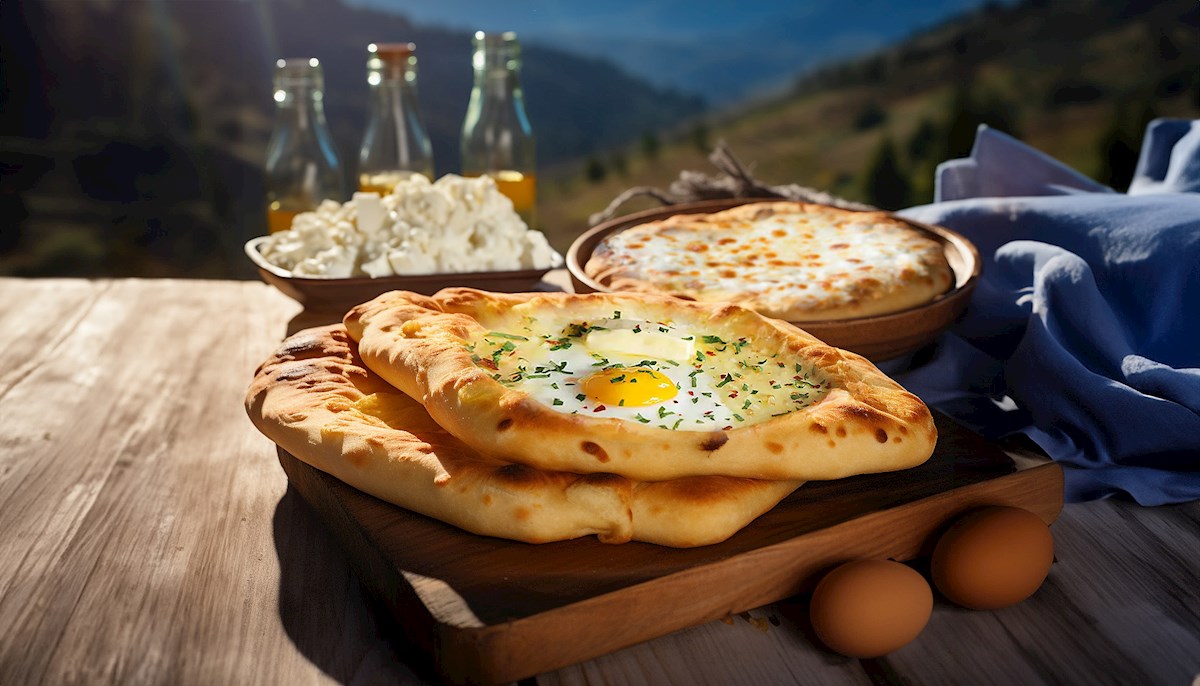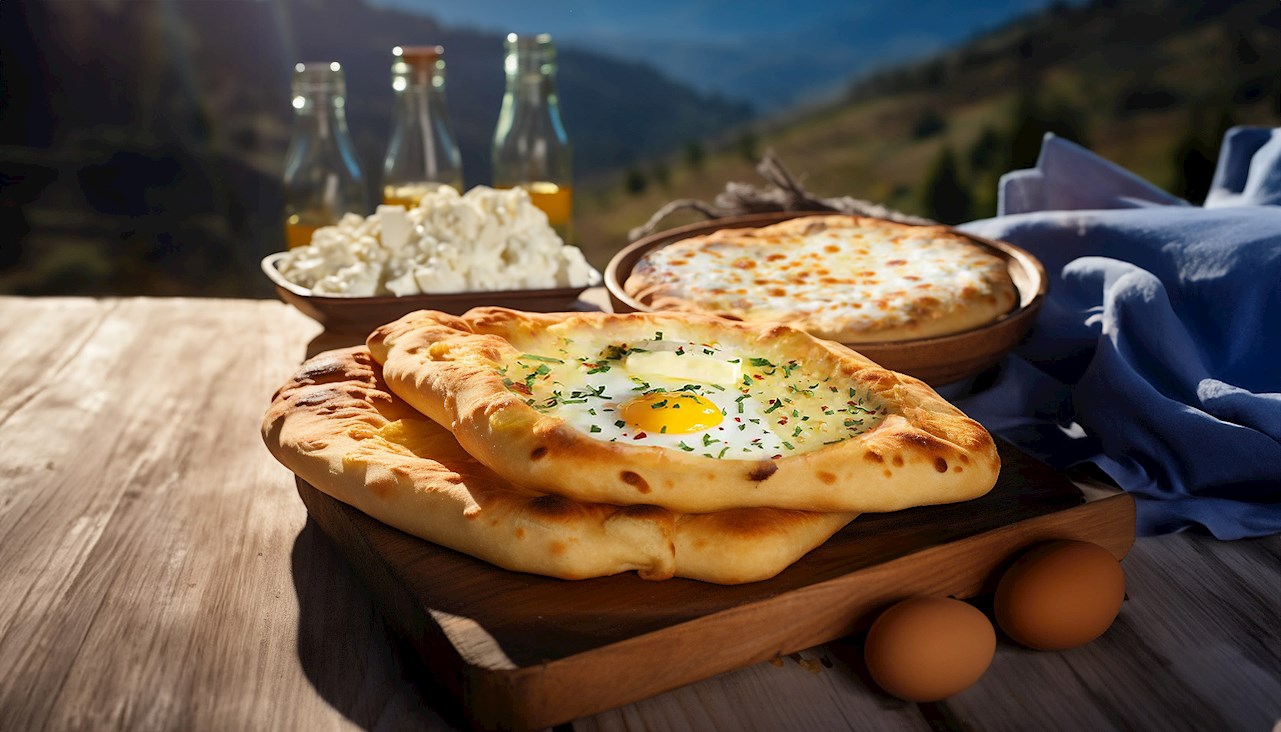Georgia’s answer to naan and pizza, khachapuri, an ooey-gooey cheese-filled bread in its many varieties, has been considered a national dish, along with khinkali dumplings. The name is coined after the Georgian words for cheese curds and bread (“khacho” and “puri”, respectively) and has many fans worldwide.
The famous French writer Frédéric Beigbeder is known for his love of khachapuri. “Khachapuri is, for me, the answer to all problems. When the apocalypse happens, or there is a war, khachapuri is my symbol, my method of resistance.”, says Beigbeder.
 Credits: io e te - მე და შენ
Credits: io e te - მე და შენ
The renowned Finnish actor Ville Haapasalo launched a khachapuri store in the vacation destination of Puumala. He personally honed the art of making khachapuri and managed to sell an impressive 25,000 of these Georgian delights in just 68 days.
Khachapuri also enjoys immense popularity in post-Soviet nations, such as Russia. During the 2014 Winter Olympics in Sochi, a staggering 175,000 khachapuris were reportedly consumed.
Variety is the spice of life
Khachapuri is not a singular dish, as each Georgian region boasts its own unique, mouth-watering version of this beloved bread/pie. Depending on the region in Georgia, it can be round, square, or even boat-shaped.
Fillings vary from soft, buttery curds known as chkinti to the stretchy sulguni cheese and even a briny sheep's milk cheese called bryndza. But cheese isn't the only filling; potatoes, green onions, greens, and even ham can be added as well.
 Credits: Сыроварня Fratelli Spirini
Credits: Сыроварня Fratelli Spirini
Out of the entire khachapuri family, the Adjarian variety often captures the most attention, especially on social media platforms like Instagram, due to its visually captivating boat shape and a visible cheese filling that is topped with a runny egg and butter.
If it doesn’t have cheese, it’s not khachapuri
However, with its rich culinary history, Georgia offers many pies that are sometimes mistaken for khachapuri due to their similar appearances. Some of the pies mentioned the most in connection with khachapuri are the bean-filled lobiani, the meat-filled kubdari from the Svaneti region, and the mkhlovani, a pie filled with cheese and leafy greens.
 Kubdari - Credits: GEORGIAN DELI & BAKERY
Kubdari - Credits: GEORGIAN DELI & BAKERY
Some purists are even on the fence about the Gurian khachapuri. Since the locals call it Gurian pie and it's filled with a mixture of cheese and hard-boiled eggs, some don't see it as legit khachapuri.
More than just food
Today, khachapuri is more than just bread; it's a symbol of Gregorian cuisine. Its making has been protected as an Intangible Monument of Cultural Heritage of Georgia, and the 28th of February is proclaimed National Khachapuri Day.
How emblematic khachapuri is of Georgian cuisine is evident also in the so-called "Khachapuri Index", a tool introduced by the International School of Economics at Tbilisi State University (ISET), that measures the cost of ingredients needed to make one khachapuri, namely flour, cheese, yeast, eggs, and butter as a way to track inflation. The index is published each month and is a popular tool used to discuss economic trends, namely, as stated earlier, inflation, but also purchasing power, regional disparities, and supply chain disruptions or seasonal variations in ingredient prices.

REGIONAL KHACHAPURI VARIETIES IN DETAIL
Imeruli Khachapuri
• Origin: Imereti region
• Ingredients: yeast dough, Imeruli cheese, sugluni cheese
 Credits: Polina Chesnakova
Credits: Polina Chesnakova
Regarded as the "mother of khachapuri", it's renowned for its thin dough and the exclusive use of Imeretian cheese, imparting a unique flavor, especially when baked traditionally in a clay pan, called a ketsi.
Mingrelian Khachapuri
• Origin: Samegrelo-Zemo Svaneti region
• Ingredients: yeast dough, Imeruli (chinkti) cheese, sugluni cheese, egg
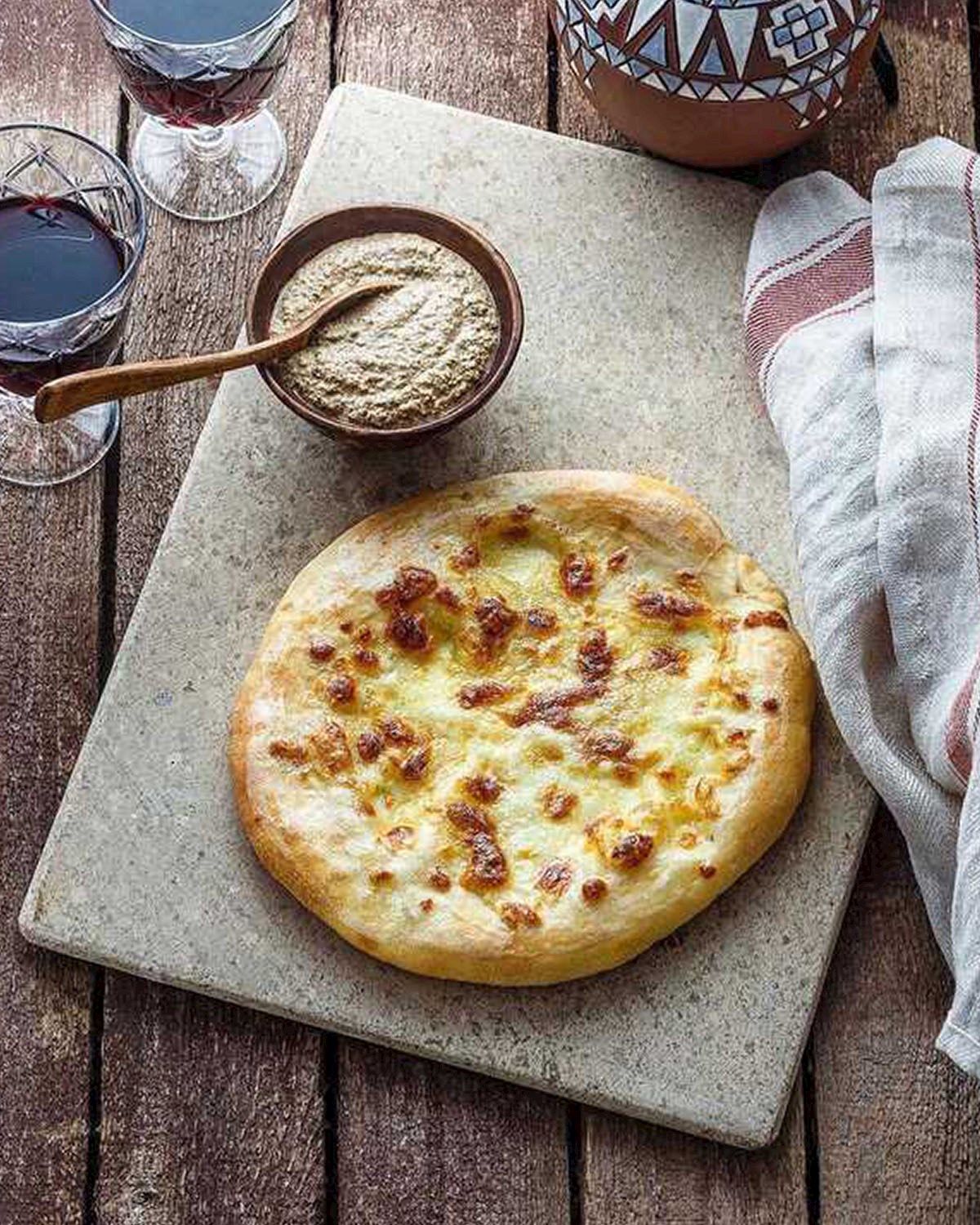 Credits: Konstantin K.
Credits: Konstantin K.
Known for its two-cheese filling, it combines freshly made "chkinti" and sulguni cheese, often baked on a stone pan ketsi. The cheese on the inside is usually not crumbled but left whole so it doesn't melt completely.
Adjarian Khachapuri
• Origin: Adjara region
• Ingredients: yeast dough, Imeruli/sulguni cheese, egg, butter
 Credits: Natia Khidasheli
Credits: Natia Khidasheli
Boat-shaped with an open top filled with cheese. Just before it's fully baked, an egg is cracked into the center, symbolizing the sun setting over the sea. It's then topped with a pat of butter after baking. A favorite in Batumi, a coastal city of Georgia.
Meskhetian Khachapuri
• Origin: Meskheti region
• Ingredients: phyllo dough, pork fat, tenili/chechili/chogi/kalti cheese
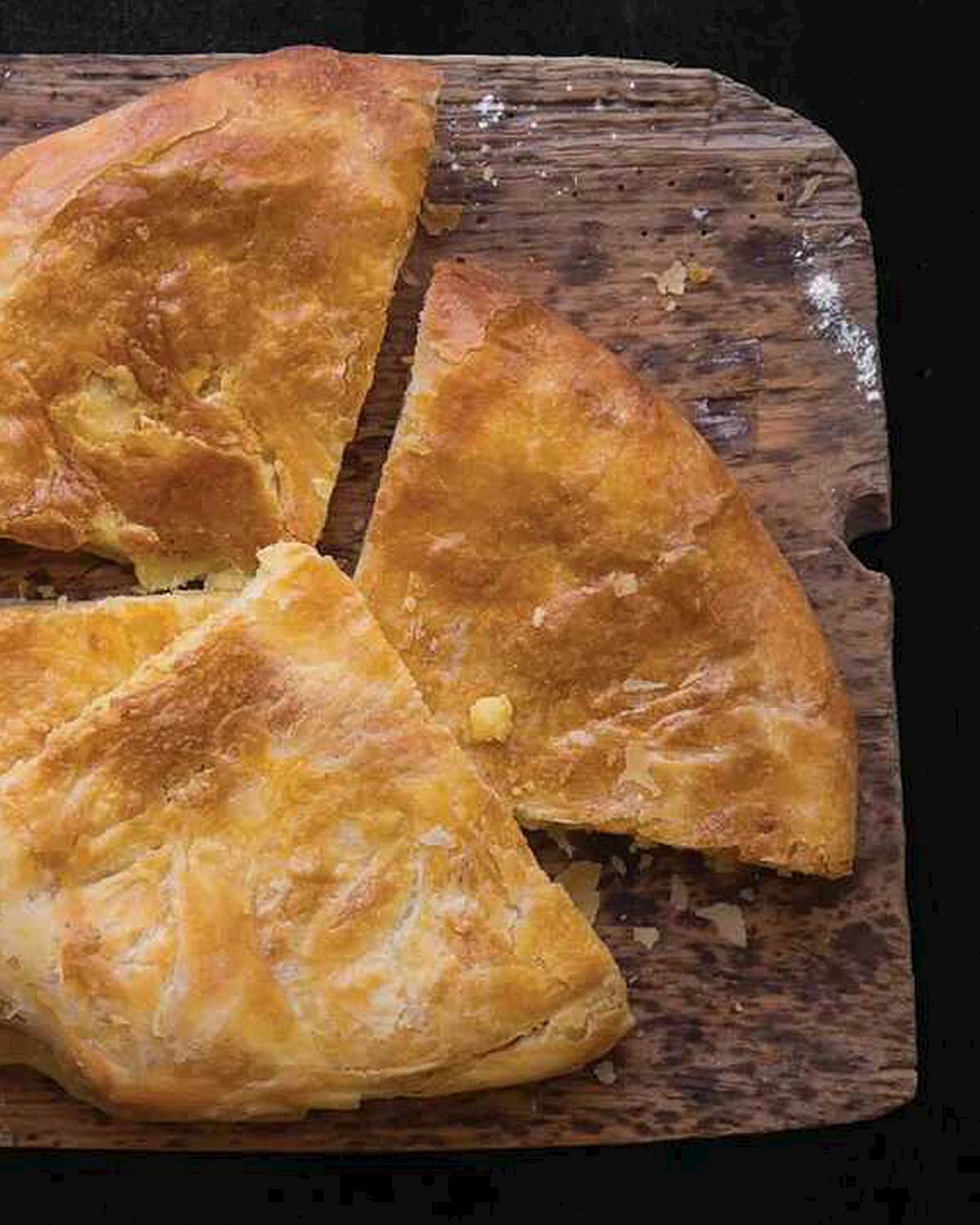 Credits: visitsamtskhejavakheti
Credits: visitsamtskhejavakheti
Known for its intricate turban shape. The thin dough is worked with fats like pork, goose, or cow fat to make a phyllo or semi-phyllo dough. The dough is filled with soft Meskhetian cheese, typically tenili, chechili, chogi, or kalti. The assembled pies are baked in a special Meskhetian stone or brick bread oven called prune.
Rachan Khachapuri
• Origin: Racha region
• Ingredients: yeasted dough, local cheese, eggs
 Credits: Terravino
Credits: Terravino
Nicknamed the geometrical khachapuri. It can be square, rectangular, triangular, or circular. The region abounds with various types of khachapuri: bachulebi, bokhchuana, ganatekhi, chakhrakina, and khachapuri with spinach, walnuts, or ham. A unique variety from this region is becheddasmuli, or stamped Rachan khachapuri, where rings of wood are used to create patterns on the khachapuri.
Ossetian Khachapuri
• Origin: Tskhinvali region
• Ingredients: yeast dough, Ossetian cheese, potatoes, butter; can also have cabbage and leafy greens
 Credits: letsgoGeorgia
Credits: letsgoGeorgia
Khabizgina is the best-known variety. It is a specialty of the Ossetian village of Samachablo; it combines potatoes with high-fat Ossetian cheese, which is sharper in flavor, for the filling and is topped with melted butter. Other varieties can have cabbage, leafy greens, and herbs in the filling.
Penovani Khachapuri
• Origin: Samtskhe-Javakheti region
• Ingredients: puff pastry, Imeruli cheese, sulguni cheese, eggs, milk
The easiest khachapuri to make. It's made with puff pastry, filled with cheese, and folded into a rectangle (or triangle). Once assembled, it's brushed with a mixture of eggs and milk.
Gurian Khachapuri
• Origin: Guria province
• Ingredients: yeast dough, Imeruli cheese, hard-boiled eggs
 Credits: Shutterstock
Credits: Shutterstock
This crescent-shaped pie has a filling of grated cheese and hard-boiled eggs, which are also placed atop the pie. It is also known as Christmas khachapuri, as it's typically prepared for Orthodox Christmas.
Svanetian Khachapuri
• Origin: Svaneti province
• Ingredients: yeasted dough, Imeruli cheese, millet flour/green onions/hemp/potato
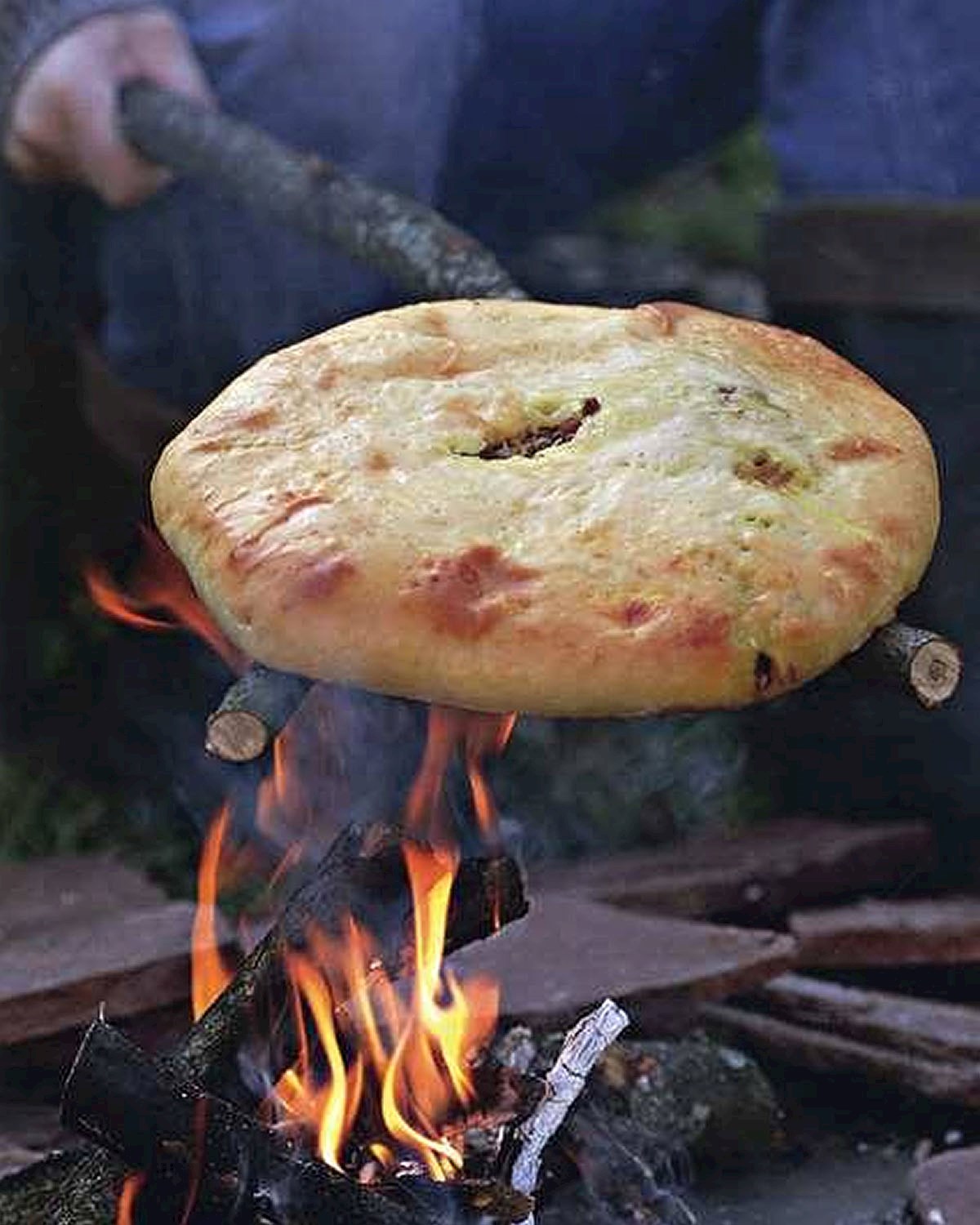 Credits: Best Of Georgia
Credits: Best Of Georgia
Originating from the Svaneti region and has a multitude of varieties. The filling is cheese (Imeruli) and either potatoes, green onions, or hemp, kartoplare, lukvne, and ltservali, respectively. Petvraali is especially noted because it has millet flour in the filling, which is why it was nicknamed "dirty" khachapuri.
Tushetian Kotori
• Origin: Tusheti region
• Ingredients: phyllo dough, kalti, clarified butter
 Credits: Let’s Eat The World
Credits: Let’s Eat The World
Exclusively from Tusheti region, this khachapuri variety has a kalti (a type of cheese curd) as the filling and is wrapped in thin, paper-like dough, which is why it's also known as purtslovani (lit. paper-like). Once assembled, it is topped with clarified butter and baked, traditionally on a stone pan (sipi).
Achma
• Origin: Adjara and Abkhazia regions
• Ingredients: phyllo/yufka dough (sheets), Imeruli/sugluni cheese, eggs
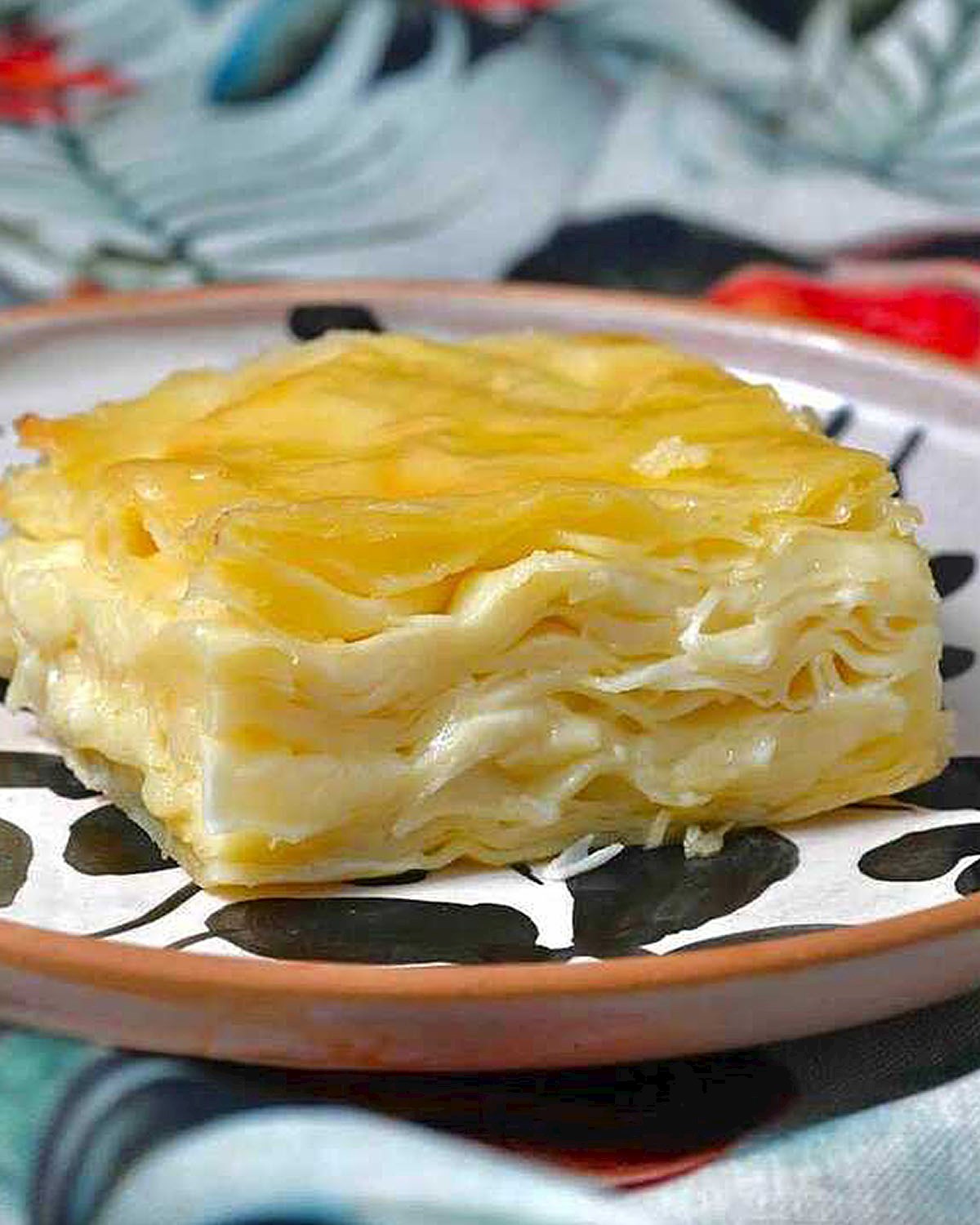 Credits: letsgoGeorgia
Credits: letsgoGeorgia
Kind of the odd one out in the khachapuri family, achma is similar to lasagna or börek in that it consists of layers of pasta filled with a mixture of cheese and egg. The top is crispy, while the tender dough is on the inside, along with the cheesy filling. Unlike other kinds of khachapuri, this one does not resemble a bread or a cheese-filled flatbread.
For an authentic Imeruli Khachapuri recipe with measures, instructions, and cooking tips, click here.
For an authentic Adjarian Khachapuri recipe with measures, instructions, and cooking tips, click here.
For an authentic Penovani Khachapuri recipe with measures, instructions, and cooking tips, click here.
For an authentic Svanetian Khachapuri recipe with measures, instructions, and cooking tips, click here.
For an authentic Ossetian Khachapuri recipe with measures, instructions, and cooking tips, click here.
